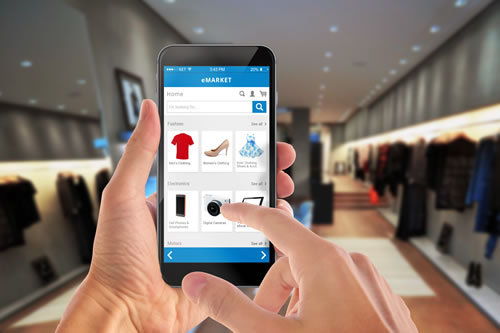Examining the role that attention plays in the purchasing behaviour of consumers
New research shows that retailers can influence a person's shopping behaviour with a very simple pre-shop intervention.
With online retailers relentlessly taking a greater share of consumers' disposable income, the pressure on shops to win customer business is considerable.
What a customer sees as they enter and walk around a shop is a key determining factor in whether they make a purchase, and what they purchase. Therefore, a fundamental function of retailing is to ensure a customer views a wide assortment of products that may activate new or forgotten needs, which in turn compels them to make an unplanned purchase. Such purchases are an important source of profit.
Retailers employ various strategies to entice shoppers into exploring the store environment, in the hope of stimulating purchases that were not planned when they entered. A popular strategy is to place every-day product categories, such as milk, in the back of a store. Customers have to travel further into the store, which naturally brings other products into view. Another well-known strategy is IKEA's use of store layouts which direct shoppers to product areas they might otherwise never encounter, given a choice. These strategies maximise the journey through the store, and increase the probability that the customer will recall a forgotten need or discover a new product.
Consumers do of course explore shop environments of their own volition, with their own biases and constraints. Many will go to a shop with a shopping list, or a budget in mind, and these constraints may counteract the retailer's attempt to spur an unplanned purchase.
One specific consumer constraint that has not received much academic examination is breadth of visual attention. This refers to the focus that is directed to a wider or more limited area in processing visual scenes. Consumers shop with a visual attentional breadth somewhere on a continuum from narrow (focused) to broad (dispersed). Shoppers' visual attentional breadth activates an exploratory mindset that stimulates visual and physical exploration of shopping environments. This affects their choices of product, and the unplanned purchases they make.
The research paper Exploratory Shopping: Attention Affects In-store Exploration and Unplanned Purchasing investigates consumers' breadth of attention.
A series of lab and field experiments were conducted in which shoppers' eye movements and walking distances were tracked.
The researchers first manipulated the breadth of attention of volunteering participants in a mini-market, with the help of digital displays that are now widely used for advertising in stores. For a broad focus, different images were shown randomly and consecutively on the left or right periphery of the screen, while for a narrow focus the same images appeared always in the middle. The participants were then equipped with mobile eye tracking glasses and placed in front of a confectionery shelf from which they were to select products. Those persons who were previously presented with images at the periphery of the screen looked at significantly more areas of the confectionery shelf than the control group, who were presented the same images in the middle of the screen.
In a second study in a supermarket, the researchers equipped the customers with pedometers to measure their in-store travel. Here too, they were shown product images on a display prior to shopping. While those customers whose attention was narrowly focused walked approximately 240 metres in the store, customers with broad attention walked over 300 metres. Significantly, the proportion of unplanned purchases in customers' shopping carts doubled.
In summary, the research found that shoppers with broad attention explored more of the product assortment and store environment, and that activating broad visual attention increases unplanned purchasing. This was found to be true relative to narrow attention, and to an untreated control group.
The research also found that the more impulsive the buyer, the more susceptible they are to these effects. This is due to a limited ability to control their visual attention.
The research advances our understanding of attentional factors in consumer behaviour. The results of the study not only make a valuable contribution to consumer research, but also offer interesting findings for practical use - specifically, how content on digital advertising media should be arranged in order to positively affect purchase behaviour.
The research also offers guidance for people who want to wield better control over their purchasing behaviour. "Our research shows that unplanned purchasing already begins at the level of visual attention," observes consumer researcher Mathias Streicher. "To reduce unplanned purchases, it is therefore better to avoid wandering glances in shopping situations - preferably with the support of a shopping list."
The accepted version of the paper Exploratory Shopping: Attention Affects In-store Exploration and Unplanned Purchasing can be downloaded at City Research Online.
The accepted version of the paper is also featured in the forthcoming papers section of the Journal of Consumer Research website.




